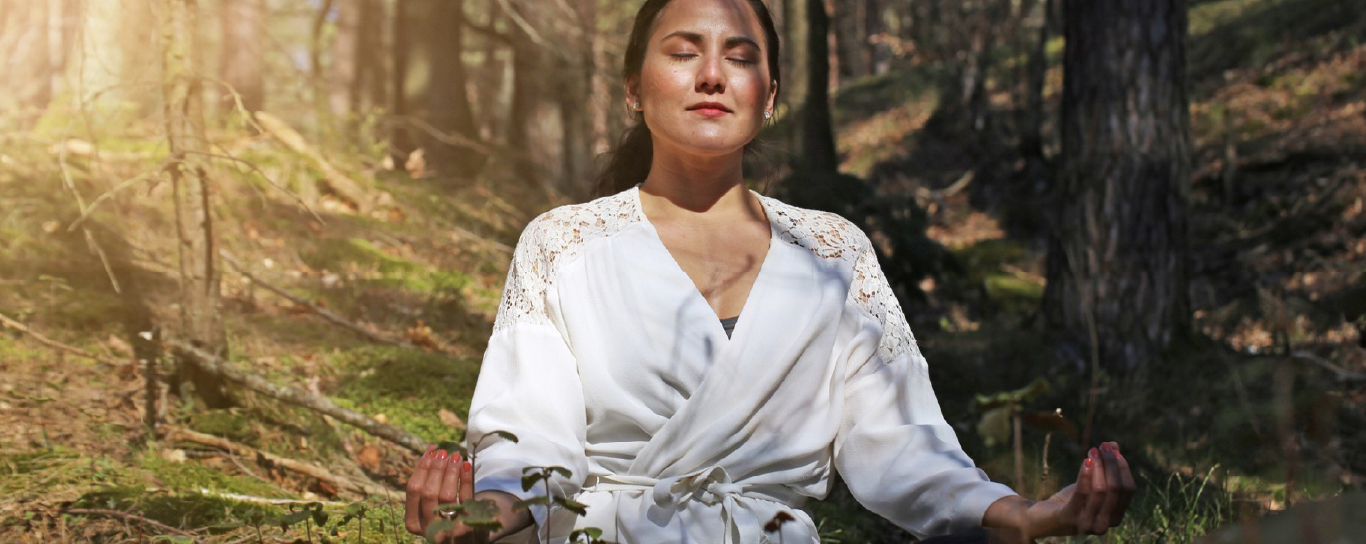
Add Forest Bathing to Your Self-Care List!
If you are looking for simple activities to improve your self-care routine, help you to de-stress, or practice mindfulness, add forest bathing to your list!
What is forest bathing? Shinrin-yoku as it is known in Japan, translates to “forest” and “bath”, and is as literal as it sounds. It belongs to a new field of medical science called forest medicine. Shinrin-yoku involves spending time in the forest – whether it’s meditative walking, sitting by a tree, or simply surrounding yourself among trees and noticing all the scents and sounds around you.
Trees and forests are well known for their role in cleaning the air, but in addition to that, they directly benefit us humans as well. As an example, a chemical released by trees and plants called phytoncides has been found to boost our immune systems.
Since 2004, Japan has led the way in researching forest medicine and has conducted several studies on the effects of forest therapy on human health. Many countries have already adopted this practice as a natural way to improve both mental and physical health.
In fact, a study of over 150 people in Japan found that even 2 hours spent in a forest had clinically significant benefits, including:
-
Lowered blood pressure
-
Reduction in the body’s fight or flight response (sympathetic nervous system)
-
Activation of the body’s rest and digestion response (parasympathetic nervous system)
-
Improvement in depressive symptoms
-
Reduction in stress hormones like cortisol
-
Increased NK cells (these cells are an important part of the immune system and have a major role in cancer prevention)
You may even see rapid benefits after spending just 2-3 hours in a forest a few times a week. If you do not have access to a forest, you can also find an area with trees or an urban park. So, leave your phone and camera at home, and adjust to spending time with nature and the outdoors.
Here is a mindfulness exercise you can do while trying forest bathing on your own. This exercise can help you to better connect to your environment. It is called the 5 senses exercise:
Begin by taking 2 or 3 deep breaths. Then ask yourself the following questions:
-
What is something I can see? (For example: Take in the colors and patterns of the trees and the sky and branches)
-
What is something I can hear? (For example: Hear birds chirping, leaves rustling)
-
What is something I can smell? (For example: Fresh air, bark)
-
What is something I can taste? (For example: Taste the air)
-
What is something I can feel? (For example: touch the leaves, flowers, tree trunks)
*You don’t have to have an answer for everything, but still ask yourself each question.
Think of forest bathing as a natural way to boost your well-being. As we are getting used to more time indoors, it is important to remember to still connect with nature and your surroundings. Take this time to quiet your mind and let your body be your guide.
References:
1. Furuyashiki, A., Tabuchi, K., Norikoshi, K., Kobayashi, T., & Oriyama, S. (2019). A comparative study of the physiological and psychological effects of forest bathing (Shinrin-yoku) on working age people with and without depressive tendencies. Environmental health and preventive medicine, 24(1), 46. https://doi.org/10.1186/s12199-019-0800-1
2. Li Q. (2019). Effets des forêts et des bains de forêt (shinrin-yoku) sur la santé humaine : une revue de la littérature [Effect of forest bathing (shinrin-yoku) on human health: A review of the literature]. Sante publique (Vandoeuvre-les-Nancy, France), S1(HS), 135–143. https://doi.org/10.3917/spub.190.0135
